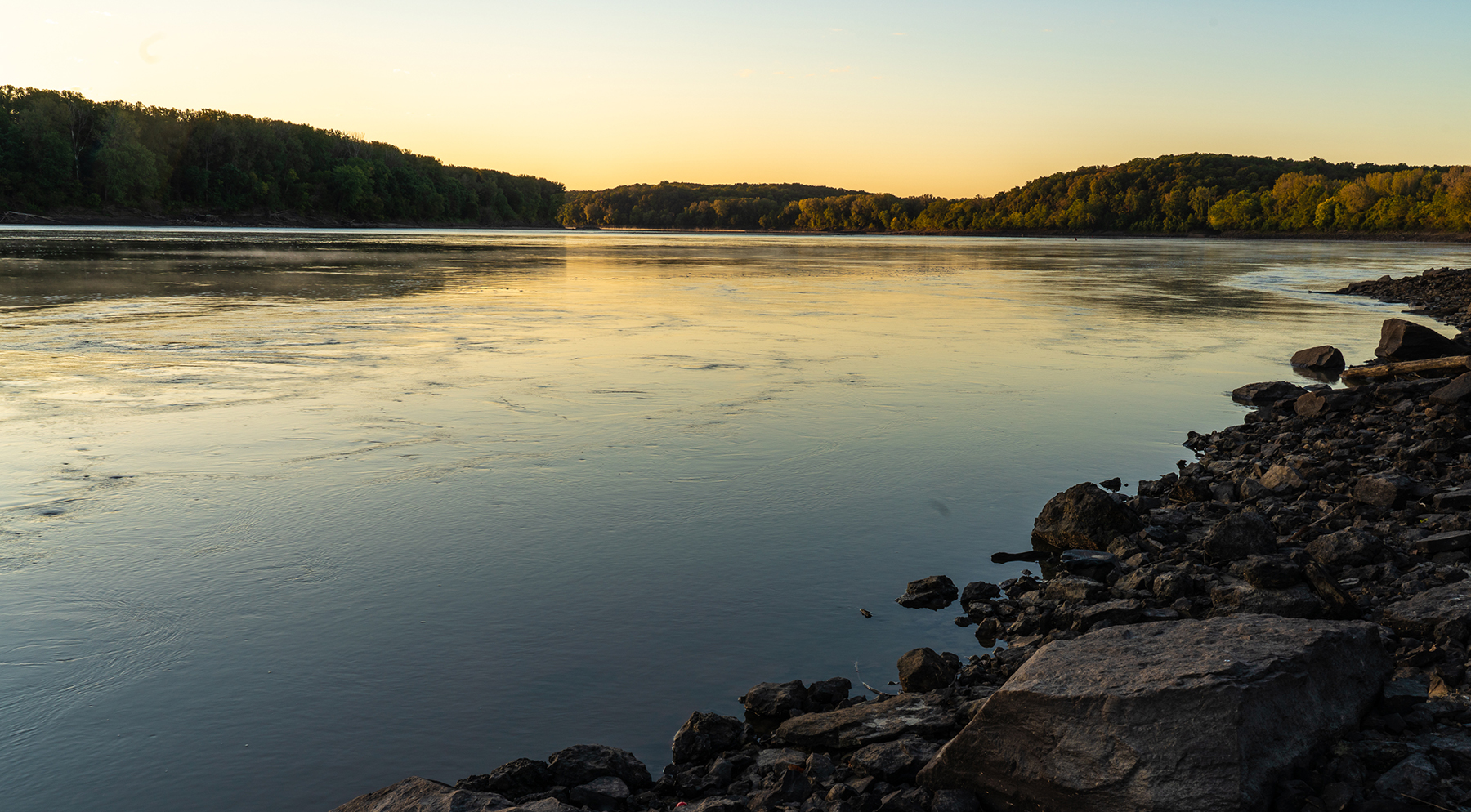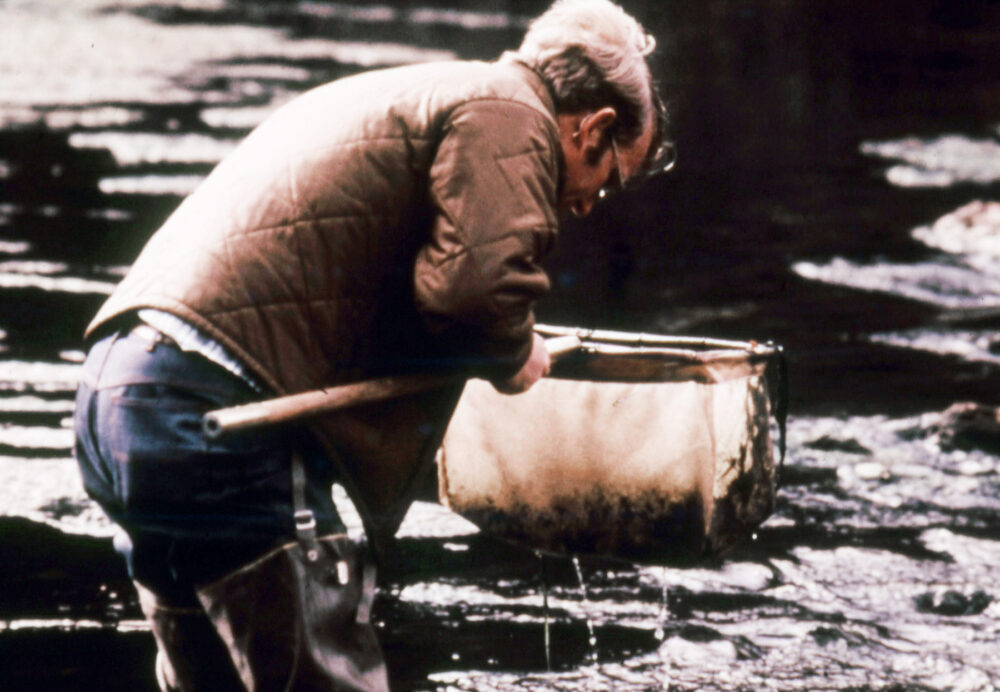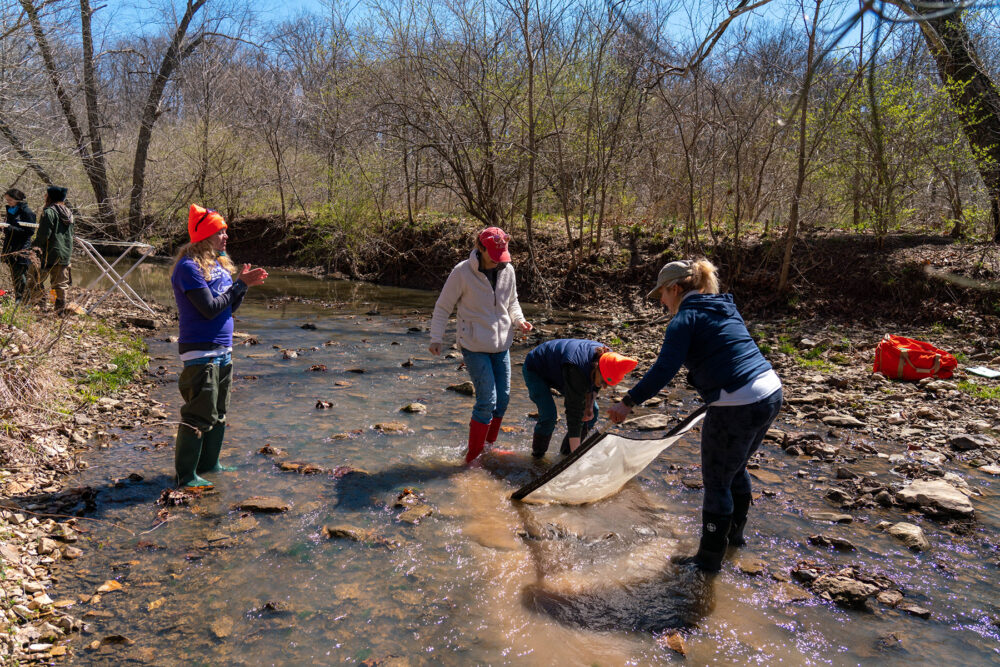The sun sets at the Missouri River access in Marion. More than half of all Missourians receive their drinking water from the Missouri River and its alluvium.
MoDNR photo by Ben Nickelson
Published by
on
Except for the air we breathe, nothing is more important to survival than water. Clean, abundant water has always been one of our most valuable and accessible resources. But by the mid-20th century, the nation’s water was under serious threat of irreversible contamination.
In response, Congress took action in 1948 by passing the Federal Water Pollution Control Act, the nation’s first law to address water pollution. Among other things, the new law required all waters to be fishable and swimmable and set a national goal of zero discharge of pollutants. Growing public awareness and concern for controlling water pollution led to sweeping amendments, and in 1972 the act was significantly reorganized and expanded to become what is now the Clean Water Act. Missouri’s Clear Water Law exists to make sure the state’s water meets federal standards.
Over the last 50 years, Missouri has made great strides toward attaining the Clean Water Act’s objective to “restore and maintain the chemical, physical and biological integrity of the nation’s waters,” and its goal of “water quality, which provides for the protection and propagation of fish, shellfish and wildlife, and provides for recreation in and on the water.” But our water’s future wasn’t always so bright.
Life before the Clean Water Act
Until the 1960s, even with the Water Pollution Act in place, cities and towns along the Missouri River failed to provide effective wastewater treatment. It wasn’t until the 1980s that any secondary treatment of wastewater was provided. Discharges from up-river cities in Iowa, Nebraska and Kansas caused problems at drinking water intakes in St. Joseph and Kansas City, which then added their own discharges to the mix.
Missouri River studies at the time found that discharges in the Sioux City, Iowa, area caused elevated levels of fecal coliform bacteria at the Omaha, Nebraska, drinking water intake. Further studies showed that river water contained harmful pathogens, including the polio virus and Salmonella.
On the state’s smaller rivers, discharges from wastewater treatment plants elevated fecal coliform bacteria, increased ammonia to toxic levels for aquatic life and caused dead zones that killed fish and macroinvertebrates from a lack of oxygen. Unreclaimed coal mines in northern and western Missouri leached acidic mine drainage that stained rocks in stream beds and killed aquatic life by acidifying the water. Heavy-metal mineral mining in both the Old and New Lead belts caused widespread landscape and surface water contamination that would require significant state investment to remediate.
The situation started improving in the 1960s, when federal, state and local governments began unprecedented efforts to combat sewage pollution. They initiated new monitoring and assessment programs, adopted water quality limits and began making improvements in wastewater treatment, both for municipal sewage and industrial effluents. Subsequent improvements in wastewater treatment, consolidation of industrial effluents into municipal systems, and more stringent effluent-limit permitting have all but eliminated large river water-quality issues.
Improved quality of life
For half a century, the Clean Water Act has been key to improving Missourians’ quality of life, starting with building centralized sewage collection and wastewater treatment systems. Until the last century, most people in cities and large towns lived in close association with sewage, both their own and their neighbor’s. Raw sewage was simply dumped onto streets or discharged into ditches, where it stayed until it was flushed away by the next rain.
As towns grew, so did the problem. Large cities began constructing underground sewers to collect and transport raw sewage to the closest stream large enough to carry it away. This led to contamination of drinking water supplies statewide and was particularly detrimental to the Missouri River, which provided drinking water to major cities along its course.
On smaller streams in the state, other issues were driving towns to provide wastewater treatment. Among these issues were the appearance and odor of streams receiving sewage, threats of legal action by downstream farmers who were losing their livestock’s water supply, and increasing demand for outdoor recreation opportunities such as swimming and fishing.
Centralized wastewater treatment and permitting of discharges to reduce pollutants have greatly improved Missouri’s water quality, human health and environment since the Clean Water Act, as well as the Missouri Clean Water Law, have been implemented.
These improvements have been achieved and maintained through investment in wastewater treatment infrastructure and implementation of a statewide permitting, compliance, enforcement and monitoring program. In turn, better water quality has led to an overall improved quality of life and increased economic and recreational opportunities for Missourians. Learn more about Missouri’s water on the Missouri Department of Natural Resources’ website.







